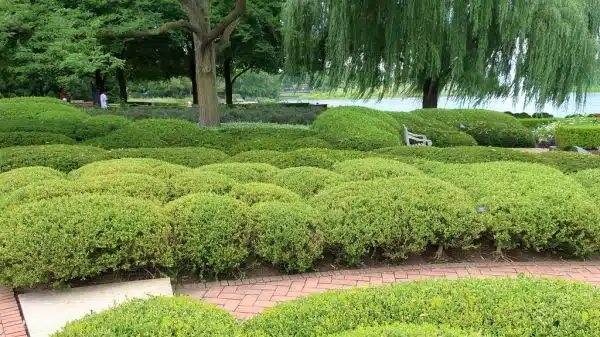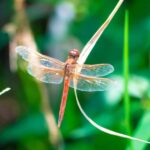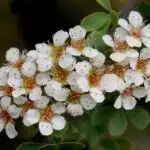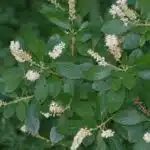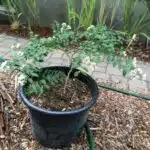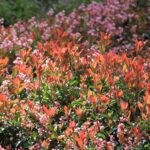Wintergreen boxwood is an evergreen shrub that can add beauty and elegance to any landscape. These shrubs are known for their shiny, dark green leaves and their ability to thrive in a variety of conditions. Wintergreen boxwood is a popular choice for hedges, borders, and foundation plantings due to their compact growth habit.
Growing and caring for wintergreen boxwood requires a basic understanding of its specific needs. Proper planting techniques, fertilization, pruning, and pest management are all important factors in ensuring the health and longevity of these shrubs. In this article, we will provide expert advice on how to successfully grow and care for wintergreen boxwood so that you can enjoy their beauty in your own landscape. Whether you are a seasoned gardener or just starting out, this guide will give you the necessary knowledge to cultivate thriving wintergreen boxwood plants.
Understanding Wintergreen Boxwood
Wintergreen Boxwood, also known as Korean Boxwood or Littleleaf Boxwood, is a popular evergreen shrub that is widely used in landscaping. The botanical name of this plant is Buxus microphylla var. koreana and it belongs to the Buxaceae family. Wintergreen Boxwood has small dark green leaves that maintain their color all year round and produce small yellow-green flowers in spring.
One of the benefits of Wintergreen Boxwood is its versatility. It can be used for various purposes such as hedges, borders, topiaries, and mass plantings. Additionally, this plant is low-maintenance and requires little pruning to keep its shape. Another benefit of Wintergreen Boxwood is its ability to tolerate different soil types, making it suitable for a wide range of growing conditions.
In terms of wintergreen boxwood growing conditions, this plant prefers well-drained soil with a pH range between 6.5 and 7.5. It also requires partial shade to full sun exposure for optimal growth. However, extreme heat or cold can damage the shrub so it’s important to protect it from harsh weather conditions. With proper care and attention, Wintergreen Boxwood can thrive for many years and add an elegant touch to any landscape design.
As you consider planting your own wintergreen boxwoods, it’s essential to choose the right location for them to grow successfully.
Choosing The Right Location For Planting
Imagine standing in your front yard, envisioning a beautiful landscape filled with lush greenery and vibrant colors. You see the perfect spot for your wintergreen boxwood, but before planting, you need to consider the location carefully. Sun exposure is crucial for the growth of your plant as it thrives in partial to full sun. Choose a spot that receives at least 6 hours of direct sunlight daily. When exposed to adequate sunlight, the plant will develop dense foliage and maintain its striking appearance throughout the year.
Soil type and drainage are significant factors that determine whether your wintergreen boxwood will thrive or struggle. The soil should be well-draining, and the ideal pH range is between 6.5 – 7.5. This will promote proper root growth and healthy foliage development while preventing diseases caused by water stagnation or poor drainage. Irrigation needs vary depending on weather patterns in your region, but generally, watering once a week should suffice.
To assist you in choosing the right location for your wintergreen boxwood, here’s a table outlining some of the key factors to consider:
| Factors | Ideal Conditions |
|---|---|
| Sun Exposure | Partial to full sun |
| Soil Type | Well-draining with pH 6.5-7.5 |
| Drainage | Good drainage |
| Irrigation Needs | Watering once a week |
Now that you’ve chosen an ideal location for your wintergreen boxwood based on sun exposure, soil type, drainage and irrigation needs, it’s time to prepare your soil!
Preparing Your Soil
Testing soil is an important step in preparing the ground for wintergreen boxwood, as it helps to determine the pH level and nutrient content of the soil. Adding fertilizer can help to improve soil fertility, promoting the growth of the wintergreen boxwood. Amending soil with organic matter such as compost, peat moss and manure can help to improve the drainage and aeration of the soil, resulting in a healthier soil environment for the wintergreen boxwood. All of these steps combined help to ensure optimal growth and health of the wintergreen boxwood.
Testing Soil
To ensure the optimal health and growth of your wintergreen boxwood, it is essential to test your soil before planting. Soil testing provides valuable information about the soil’s nutrient levels, pH balance, and other properties that can affect plant growth. The first step in soil testing is to collect a sample from the area where you plan to plant your wintergreen boxwood. Use a trowel or shovel to dig a small hole about six inches deep, then gather a handful of soil from that depth.
Once you have collected your soil sample, send it off to a reputable lab for analysis. A good soil testing lab will provide detailed information about your soil’s nutrient levels and pH balance, along with recommendations for fertilizers and other amendments that can improve its quality. Before planting your wintergreen boxwood, it’s important to make any necessary adjustments based on the results of your soil test. For example, if your soil is too acidic, you may need to add lime or wood ash to raise its pH level.
In conclusion, preparing your soil is an essential step in growing healthy and thriving wintergreen boxwoods. Soil testing is an important tool for ensuring that your plants have access to the nutrients they need for optimal growth and development. By following these simple steps and making any necessary adjustments based on the results of your soil test, you can create an ideal environment for growing beautiful wintergreen boxwoods that will be the envy of all who see them!
Adding Fertilizer
After testing your soil, the next step in preparing it for wintergreen boxwoods is adding fertilizer. There are different types of fertilizers available, each with its own benefits and drawbacks. Organic fertilizers are made from natural materials like compost, manure, and bone meal. They release nutrients slowly over time and improve soil health. Synthetic fertilizers are made from chemicals and provide an immediate boost of nutrients but can harm beneficial microorganisms in the soil.
When choosing a fertilizer for your wintergreen boxwoods, it’s important to consider the plant’s nutrient requirements and the composition of your soil. A balanced fertilizer with equal amounts of nitrogen, phosphorus, and potassium (NPK) is usually recommended for boxwoods. However, if your soil is already high in one or more of these nutrients, you may need to choose a fertilizer with a different NPK ratio.
The best fertilizing schedule for wintergreen boxwoods depends on several factors, including climate, soil type, and plant age. In general, it’s best to apply fertilizer in early spring before new growth begins and again in late summer or early fall to promote root development before winter dormancy. Avoid fertilizing during hot weather or drought conditions as this can stress the plants. With proper soil preparation and regular fertilization according to their needs, your wintergreen boxwoods will thrive for years to come.
Proper Planting Techniques
When planting wintergreen boxwood, it is important to pay attention to the planting depth and root ball size. The hole should be dug twice as wide and just as deep as the root ball. Be sure not to plant the boxwood too deeply, as this can cause problems with growth and health. The top of the root ball should be level with the surrounding soil.
Mulching is also an important aspect of proper planting techniques for wintergreen boxwood. A layer of mulch helps to insulate the roots from extreme temperatures and retain moisture in the soil. It also helps to control weeds around the plant, which can compete for nutrients and water. However, it is important not to mound mulch up around the trunk of the boxwood, as this can lead to rot and disease.
Weed control is another crucial element of proper planting techniques for wintergreen boxwood. Weeds can quickly overtake young plants, stealing valuable resources that are needed for healthy growth. Regular weeding by hand or using a hoe will help keep weeds at bay. In addition, adding a layer of weed barrier fabric underneath the mulch can provide added protection against weed growth.
Transition: Now that you have properly planted your wintergreen boxwood, it’s time to focus on another critical aspect of care – watering.
Watering Your Wintergreen Boxwood
After properly planting your wintergreen boxwood, it’s important to ensure that it receives adequate water to promote healthy growth. Neglecting this aspect of care can lead to stunted growth or even death of the plant. Let’s take a hypothetical example: you’ve planted your wintergreen boxwood in well-draining soil and followed all the proper planting techniques. However, you forget to water it consistently, resulting in the plant becoming dry and brittle. This can be avoided by following proper watering techniques.
Watering frequency is an important aspect of caring for your wintergreen boxwood. As a general rule, it’s best to water deeply once per week rather than frequent shallow watering. This allows for deep root growth and ensures that the entire root ball is hydrated. However, it’s important to note that the frequency of watering may vary depending on factors such as climate, soil type, and exposure to sunlight.
To determine when your wintergreen boxwood needs watering, you should monitor the moisture level of the soil around the base of the plant. This can be done by sticking your finger into the soil up to about two inches deep; if it feels dry at this depth, then it’s time to water. Alternatively, you can use a moisture meter or visually inspect the soil for signs of dryness such as cracking or pulling away from the edge of the pot.
| Soil Type | Watering Frequency | Amount |
|---|---|---|
| Sandy | Every 5-7 days | 1 inch |
| Loamy | Every 7-10 days | 1-2 inches |
| Clay | Every 10-14 days | 2 inches |
Proper watering techniques are crucial for maintaining healthy wintergreen boxwoods. By monitoring soil moisture levels and adjusting watering frequency accordingly based on factors such as climate and soil type, you can promote optimal growth and ensure the longevity of your plant. In the next section, we’ll discuss fertilizing for optimal growth.
Fertilizing For Optimal Growth
One of the most important factors in achieving optimal growth for your wintergreen boxwood is fertilization. Fertilizers provide essential nutrients to your shrubs, which help them grow and develop properly. However, choosing the right fertilizer can be a daunting task, as there are many options available in the market. Two main types of fertilizers are natural and chemical.
Natural fertilizers are made from organic materials such as compost, manure, and bone meal. These fertilizers release nutrients slowly over time and improve soil health by increasing microbial activity. They are safe for the environment and do not harm beneficial insects or wildlife. On the other hand, chemical fertilizers contain synthetic nutrients that are quickly absorbed by plants but can harm the environment if overused.
To ensure optimal growth of your wintergreen boxwood, it’s important to fertilize them regularly throughout the growing season. The frequency of fertilization will depend on various factors such as soil type, climate conditions, and plant age. Generally, young shrubs require more frequent fertilization than mature ones. A good rule of thumb is to apply fertilizer every 6-8 weeks during the growing season.
Fertilizing your wintergreen boxwood is an essential part of their care routine that should not be overlooked. By choosing the right type of fertilizer and applying it at regular intervals, you can ensure that your shrubs stay healthy and vibrant throughout the year. In the next section, we will discuss how to prune and shape your shrubs to maintain their aesthetic appeal while promoting proper growth and development.
Pruning And Shaping Your Shrubs
One interesting statistic to keep in mind when pruning your wintergreen boxwood is that these shrubs can handle a significant amount of pruning without harm. In fact, they can tolerate being cut back by up to one-third of their size each year. This means that you have a lot of freedom when it comes to shaping and maintaining your wintergreen boxwood, without worrying about damaging the plant.
When it comes to pruning techniques for your wintergreen boxwood, it’s important to start by removing any dead or damaged branches first. This will help improve the overall health and appearance of the shrub. From there, you can use thinning cuts to remove any crossing branches or those that are growing inward towards the center of the plant. Thinning cuts will also help promote air circulation throughout the shrub, which can reduce the risk of disease.
For shaping methods, consider using hand pruners or shears to create clean cuts and precise shapes. You can create formal shapes like spheres or cones for a more traditional look, or try something more unique like a spiral or topiary shape. Remember to step back frequently while shaping your wintergreen boxwood to ensure that you’re achieving the desired effect from all angles. In our next section, we’ll discuss preventing pests and diseases so that you can keep your wintergreen boxwood healthy and looking great for years to come.
Preventing Pests And Diseases
Identifying pests in wintergreen boxwood is the first step towards preventing infestations. The most common pests of this plant are spider mites, leaf miners, and psyllids. Spider mites cause webbing on the leaves and can be seen under a magnifying glass. Leaf miners create tunnels through the leaves that can be spotted by their white or brown trails. Psyllids cause yellow spots on the leaves and the emergence of small insects.
Preventative measures against diseases include proper watering techniques, pruning, and regular fertilization. Overwatering can lead to root rot and other fungal infections, while underwatering makes plants susceptible to spider mites and other pests. Pruning helps remove diseased or damaged branches that could spread disease throughout the plant. Regular fertilization provides nutrients that help keep plants healthy and resistant to disease.
In addition to these preventative measures, it is important to choose your planting location wisely as some pests are attracted to specific environments. For example, psyllids tend to thrive in areas with high humidity levels while spider mites prefer drier environments. By being aware of these factors, you can ensure a healthy environment for your wintergreen boxwood and prevent pest infestations from occurring.
Moving on from pest prevention, let’s take a closer look at some common wintergreen boxwood varieties that are suitable for different landscaping needs.
Common Wintergreen Boxwood Varieties
After taking the necessary steps to prevent pests and diseases, it is important to choose the best cultivars for your wintergreen boxwood. When selecting a variety, consider its growth rate, size, and overall appearance. Some popular cultivars include Winter Gem, Green Mountain, and Chicagoland Green.
Winter Gem is a slow-growing variety that reaches a maximum height of 3 feet. It has glossy green leaves that turn bronze in the winter months. Green Mountain is another slow-growing variety with a narrow, upright habit that can reach up to 5 feet in height. Its leaves are dark green and have a slightly rounded shape. Chicagoland Green is a faster-growing variety with an oval shape and dark green foliage.
When choosing a wintergreen boxwood cultivar, it is also important to consider disease resistance. Some varieties are more susceptible than others to certain diseases like boxwood blight or root rot. Winter Gem has shown strong resistance to boxwood blight, while Chicagoland Green has been known to be more resistant to root rot.
As you plan your garden layout, you may want to consider companion planting ideas for your wintergreen boxwood. Planting other shrubs or perennials nearby can provide additional visual interest and help create a balanced landscape design. In the next section, we will explore some companion planting options that work well with wintergreen boxwood.
Companion Planting Ideas
Companion Planting Ideas:
Wintergreen boxwood is a versatile and attractive shrub that can be used in various landscape designs. It offers year-round interest with its glossy, dark green foliage that turns bronze in winter. When it comes to companion planting combinations, you can choose from a variety of other plants that complement the wintergreen boxwood or create a contrasting effect.
One popular design idea for wintergreen boxwood is to pair it with flowering perennials such as lavender, salvia, and catmint. These plants add color and texture to the garden while providing an attractive contrast against the evergreen foliage of the boxwood. Another option is to plant wintergreen boxwoods in rows or hedges and underplant them with groundcovers such as creeping thyme or ajuga. This creates a neat and well-groomed look while also preventing weed growth.
For those who prefer a more naturalistic style, wintergreen boxwood can be combined with ornamental grasses like feather reed grass or switchgrass. The tall spikes of grass add height and movement to the garden while softening the sharp lines of the boxwood. Additionally, including some native plants like black-eyed Susan, coneflower or butterfly weed can attract pollinators and other beneficial insects to your garden.
Transition: Now that you have some ideas for companion planting combinations for your wintergreen boxwood, it’s important to know how to manage any potential damage caused by harsh winter weather.
Managing Winter Damage
Winter damage is a common issue that affects many shrubs, including wintergreen boxwood. The most common form of winter damage on this plant is foliage burn, which happens when the leaves are exposed to harsh winds and low temperatures. To prevent this from happening, it’s crucial to protect the foliage by wrapping the shrub with burlap or a similar material. This will help insulate the plant against cold and wind.
If your wintergreen boxwood has already sustained damage, don’t worry. You can still repair it by pruning off any broken or damaged branches. Start by examining the shrub for any signs of injury or weakness. Once you’ve identified the affected areas, use sharp pruning shears to remove them cleanly and smoothly. Be sure to cut back to healthy growth and avoid leaving any jagged edges.
By taking these steps to protect and repair your wintergreen boxwood after winter damage, you can ensure that it continues to thrive year after year. In the next section, we’ll explore how you can propagate your shrubs to create new plants for your garden or landscape design.
Propagating Your Shrubs
After managing winter damage, it’s important to consider the future growth of your wintergreen boxwood. One effective way to expand your garden is by propagating shrubs. Propagation techniques can be done through layering, cuttings, or division. Wintergreen boxwoods are hardy plants that can be propagated easily through stem cuttings.
To propagate your wintergreen boxwood, choose a healthy plant and take cuttings in the early spring when new growth begins to appear. Cut a 4-6 inch section just below a leaf node and remove any leaves on the lower half of the cutting. Dip the end of the cutting into rooting hormone before placing it in a potting mix of sand and peat moss. Keep the soil moist and place the cutting in indirect sunlight until roots form.
Rooting hormone application can increase success rates when propagating shrubs as it stimulates root growth and prevents rotting. It’s important to keep an eye on the moisture level of your soil during propagation as overly wet soil can cause root rot, while dry soil can prevent proper root development.
Next up: transplanting your wintergreen boxwood. To ensure a successful transplant, carefully move your propagated shrub from its pot into well-draining soil with partial sunlight. Water thoroughly after transplanting and continue to monitor moisture levels until roots become established in their new location. By following these steps, you’ll have a thriving garden full of beautiful wintergreen boxwoods for years to come!
Transplanting Your Wintergreen Boxwood
When it comes to transplanting your wintergreen boxwood, there are a few key factors to consider. First and foremost, choosing the right nursery is essential. Look for a reputable nursery that specializes in boxwoods and has a good reputation for healthy plants. This will ensure that you start with a strong and healthy plant that is more likely to thrive after transplantation.
Once you’ve chosen your plant, it’s time to prepare the soil. Boxwoods prefer well-draining soil that is rich in organic matter. Amend your soil with compost or other organic matter prior to planting, and make sure the area where you plan to transplant your boxwood receives adequate sunlight. If the soil in your yard is heavy clay or doesn’t drain well, consider creating a raised bed for your boxwood.
When it’s time to transplant, be sure to carefully dig up as much of the root ball as possible without damaging the roots. Place the plant into its new hole at the same depth it was previously planted and backfill with soil. Water thoroughly and regularly until the plant becomes established in its new location. By following these steps, you can ensure a successful transplant of your wintergreen boxwood.
Moving on from transplantation, it’s important to know how to troubleshoot common problems that may arise when caring for your wintergreen boxwood. One of the most common issues is leaf scorch, which can occur during periods of drought or hot weather. Another potential problem is blight or fungal infections, which can cause dieback or discoloration of leaves and stems. By staying vigilant and addressing any issues promptly, you can help ensure the long-term health of your wintergreen boxwood plants.
Troubleshooting Common Problems
As the saying goes, prevention is better than cure. But sometimes, despite our best efforts in caring for our wintergreen boxwood, problems still arise. One common issue is discoloration of the leaves. This could be caused by various factors such as nutrient deficiencies, insect infestations, or diseases. To diagnose the problem, carefully observe the affected parts and look for signs of stress. Check the soil moisture level and pH to ensure that they are within the optimal range for boxwoods. Once you have identified the cause of the discoloration, take appropriate measures to address it before it spreads further.
Another potentially serious problem that could affect your wintergreen boxwood is root rot. This fungal disease can be caused by overwatering or poorly drained soil. Symptoms include yellowing leaves, stunted growth, and wilting foliage. If you suspect that your boxwood has root rot, dig up a small portion of the roots and examine them for any signs of decay or discoloration. If detected early on, you may be able to save your plant by improving drainage and reducing watering frequency. For severe cases, consult with a professional to discuss treatment options.
Despite its susceptibility to certain problems, growing and caring for wintergreen boxwood can be a rewarding experience when done right. With proper maintenance and attention to detail, you can enjoy the beauty of this evergreen shrub all year round. Keep an eye out for any signs of stress or disease and take prompt action when needed. By doing so, you will help your plants thrive and create a stunning landscape that will impress anyone who sees it.
Enjoying The Beauty Of Your Wintergreen Boxwood
Wintergreen boxwood is a beautiful and versatile shrub. However, like any plant, it can experience health issues that may affect its aesthetics. To keep your wintergreen boxwood healthy and visually appealing, it’s important to troubleshoot common problems.
One common issue with wintergreen boxwood is leaf burn. This occurs when the plant is exposed to too much sun or wind, causing the leaves to dry out and turn brown. To prevent leaf burn, make sure your wintergreen boxwood is planted in an area with partial shade and protected from strong winds. Additionally, water your plant regularly to maintain proper moisture levels.
Another problem that can affect the health of your wintergreen boxwood is root rot. This fungal disease occurs when the soil around the roots stays too wet for too long. Symptoms include yellowing leaves, wilting branches, and stunted growth. To prevent root rot, make sure your wintergreen boxwood is planted in well-draining soil and avoid overwatering.
To fully enjoy the beauty of your wintergreen boxwood, it’s important to maintain its health and aesthetics through proper care and troubleshooting common problems. By monitoring for leaf burn and root rot, you can ensure that your plant remains healthy and vibrant for years to come. With consistent attention and care, your wintergreen boxwood will be a stunning addition to any landscape design.
Frequently Asked Questions
Can Wintergreen Boxwood Be Grown In Containers Or Should They Be Planted In The Ground?
Wintergreen boxwood is a popular choice among gardeners due to its evergreen foliage and compact growth habit. When it comes to growing these shrubs, gardeners often wonder whether they can be grown in containers or if they should be planted directly in the ground. The good news is that wintergreen boxwood can indeed be grown in containers, provided that certain soil requirements are met. Container gardening requires specific soil mixes that provide adequate drainage and moisture retention. It is important to choose a container that is large enough for the roots to grow, but not too large as this may lead to overwatering and waterlogging of the soil. Overall, wintergreen boxwood can thrive in containers with the right soil mix and proper care, making them an excellent addition to any outdoor space.
How Often Should Wintergreen Boxwood Be Pruned?
Wintergreen boxwood is a popular shrub in landscaping and horticulture, known for its evergreen foliage and versatility in different garden designs. Pruning frequency is an essential task to maintain the shape and health of wintergreen boxwood. On average, wintergreen boxwood should be pruned once or twice a year, depending on the desired shape and size of the plant. Timing is critical when pruning wintergreen boxwood; it’s best to prune in late winter or early spring before new growth appears. Using proper pruning techniques such as removing dead or diseased branches, thinning out dense areas, and shaping the plant will promote healthy growth and enhance the visual appeal of this evergreen shrub.
Is Wintergreen Boxwood Deer Resistant?
Wintergreen boxwood is a popular evergreen shrub that can add year-round beauty to a landscape. While it is known for its attractive foliage and ability to thrive in winter, gardeners may wonder if it is also deer resistant. The good news is that wintergreen boxwood is generally considered to be deer resistant, making it an excellent choice for gardens where deer are a frequent problem. However, this does not mean that deer will never nibble on the plant, especially during harsh winters when food sources are scarce. To help protect the shrub from hungry deer, gardeners may consider using repellents or fencing. In terms of winter care, wintergreen boxwood requires regular watering throughout the colder months to prevent it from drying out. Additionally, gardeners should avoid pruning the shrub during this time as it may cause damage due to cold temperatures.
Can Wintergreen Boxwood Tolerate Full Sun Or Should It Be Planted In Partial Shade?
Wintergreen boxwood is a popular shrub that can add beauty and structure to any landscape. When deciding where to plant it, it is important to consider the amount of sunlight the shrub will receive. While wintergreen boxwood can tolerate full sun, it is recommended to plant it in partial shade for optimal growth and health. This is because intense sunlight can cause the leaves to dry out and damage the plant’s overall appearance. Additionally, choosing the right soil conditions is crucial for wintergreen boxwood’s success. The shrub prefers well-draining soil that is slightly acidic with moderate moisture levels. By selecting an appropriate planting location and providing proper care, gardeners can enjoy a healthy and vibrant wintergreen boxwood for years to come.
How Long Does It Take For Wintergreen Boxwood To Reach Its Mature Size?
Wintergreen boxwood is a popular evergreen shrub that can grow up to 5 feet tall and wide, making it an ideal choice for hedges, borders, and topiaries. The plant’s growth rate depends on various factors such as propagation methods, soil quality, water availability, and sunlight exposure. Typically, it takes around five to six years for wintergreen boxwood to reach its mature size. Propagation methods include both seed and vegetative propagation with the latter being more reliable. Ideal growing conditions for wintergreen boxwood include well-drained soils with a pH range of 6-7, regular watering during the summer months, and partial shade or filtered sunlight exposure. With proper care and maintenance, wintergreen boxwood can add beauty and structure to any landscape design.
Conclusion
Wintergreen boxwood is a versatile shrub that can be grown in both containers and in the ground. Its compact size, evergreen foliage, and resistance to deer make it an excellent choice for landscaping. Regular pruning is necessary to maintain the desired shape and size of the shrub. It is recommended to prune wintergreen boxwood once or twice a year, preferably in late winter or early spring.
Despite its evergreen nature, wintergreen boxwood prefers partial shade rather than full sun exposure. Planting it in partial shade will help prevent leaf burn and ensure optimal growth. While it may take some time for the shrub to reach its mature size, the wait is well worth it as wintergreen boxwood adds texture and color to any garden.
In conclusion, if you are looking for an easy-to-care-for shrub that adds beauty and interest to your garden, then wintergreen boxwood is an excellent choice. As a horticulture expert, I recommend planting it in partial shade, pruning it regularly, and being patient as it grows into its mature size over time. So why not add this stunning shrub to your landscape today?
Image Credits

